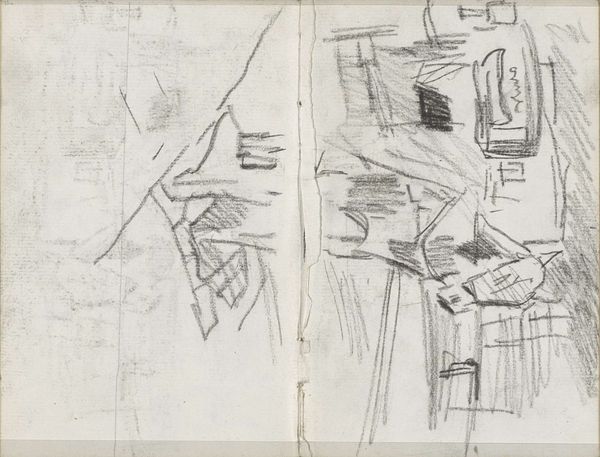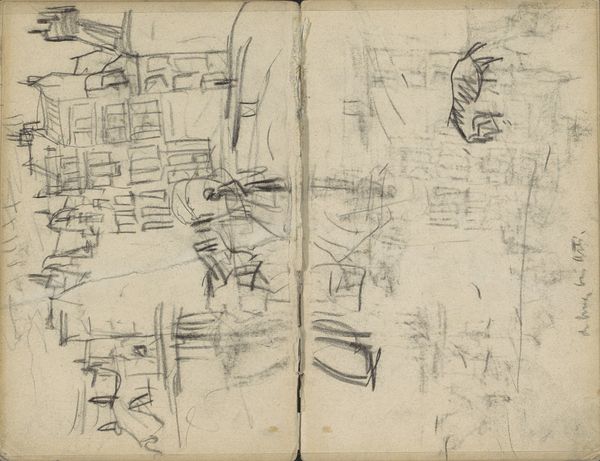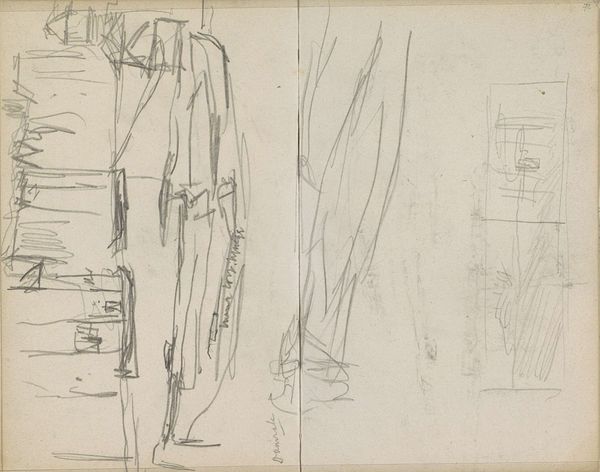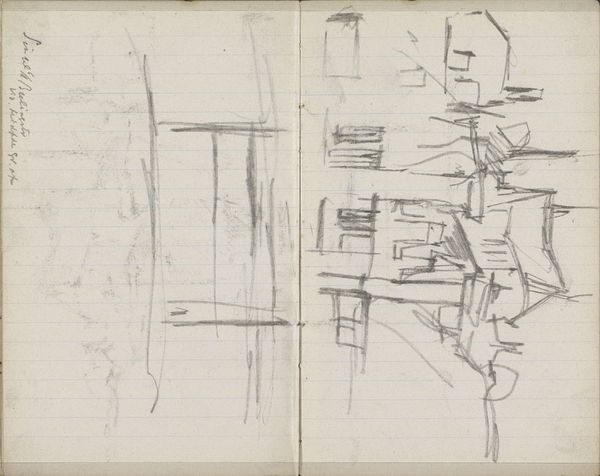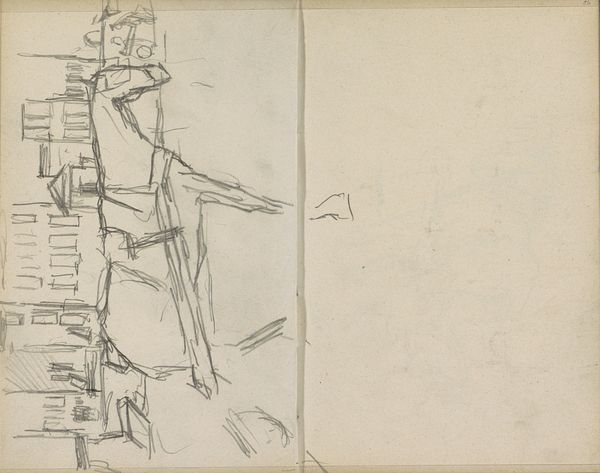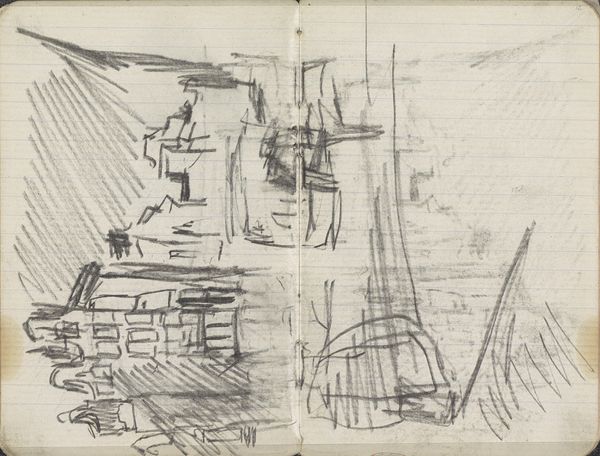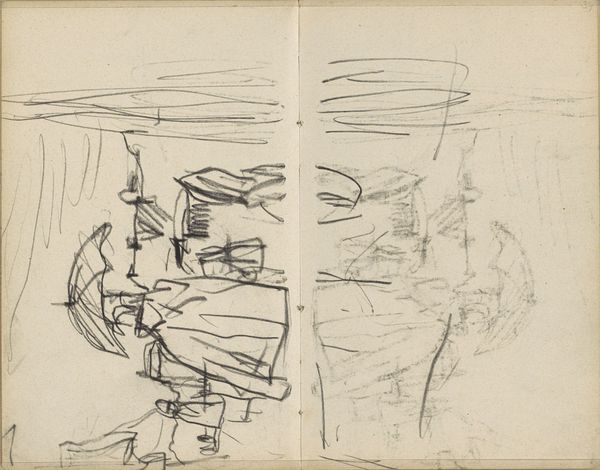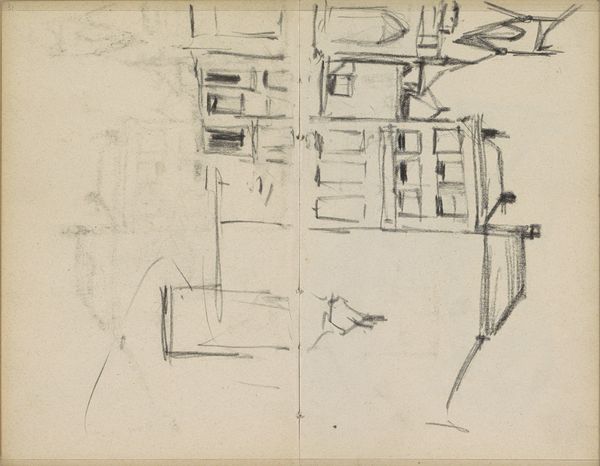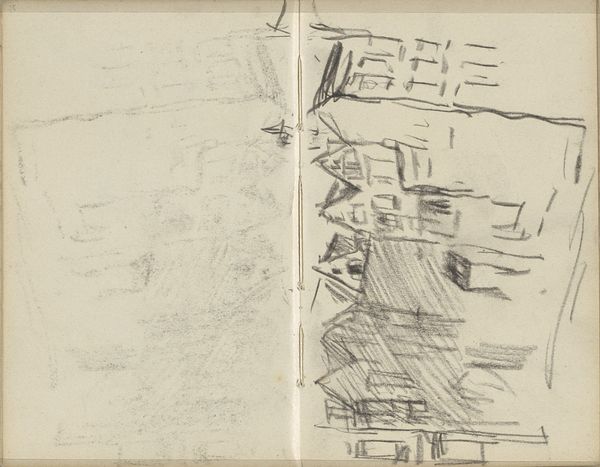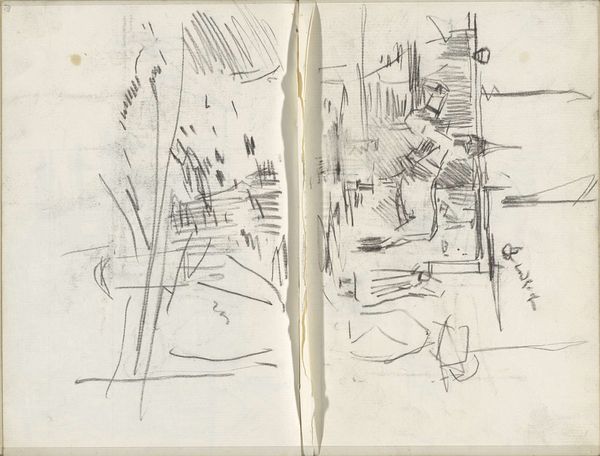
Gezicht op een straat nabij de Blauwbrug te Amsterdam en figuurstudies 1887 - 1891
0:00
0:00
georgehendrikbreitner
Rijksmuseum
drawing, graphite
#
drawing
#
impressionism
#
graphite
#
cityscape
#
street
Copyright: Rijks Museum: Open Domain
Curator: Welcome. We're standing before George Hendrik Breitner's drawing, "Gezicht op een straat nabij de Blauwbrug te Amsterdam en figuurstudies," likely created between 1887 and 1891. The work in graphite offers a quick impression of a street scene in Amsterdam, combined with some human figures sketched rapidly on the same page. Editor: My first thought is about how unfinished it feels, how fragmentary. It is interesting, I see people, and buildings. Yet, at first sight, these forms threaten to dissolve back into abstract lines again. The starkness of the graphite, along with all that open space around each figure...makes me think about alienation and social life in the urban setting of Breitner’s era. Curator: That's perceptive. Breitner was very interested in capturing modern urban life, and these sketches were likely made quickly, in situ, documenting his observations in the streets of Amsterdam. Consider, this was an era where the city was undergoing significant transformation with industrialization. We tend to show his finished works, and neglect these early explorations in which you perceive the rawness of reality. Editor: Right. The sketches feel immediate, less filtered, closer to the lived experience of the working classes—a viewpoint often excluded from the Dutch Golden Age paintings that dominate our galleries and narratives around the Dutch art tradition. You almost get a sense of him wanting to include a record of figures generally omitted from art traditions. Curator: I think there's something to that. Breitner aimed to capture life as it unfolded. He worked often in photography too and I think he looked for these sketches to have some of that raw realism to contrast with traditional academic art of his period, with the classical obsession. These graphite marks become documents in their own way. He almost seeks to flatten conventional perspective. Editor: Indeed. They are a reminder that art history has always been about choices: who to represent, how, and for what purpose. This drawing provides us a powerful counter-narrative of seeing the history as unfinished and of having different levels. It makes us rethink all the artwork shown to us today. Curator: Precisely. It's a fantastic example of the kind of urban observations that would inform some of his more well-known paintings. A view to considering the unseen, with the same urgency. Editor: Thanks, looking at it has provoked thought around themes that still are central. Curator: A testament to the work’s enduring power, after all.
Comments
No comments
Be the first to comment and join the conversation on the ultimate creative platform.
